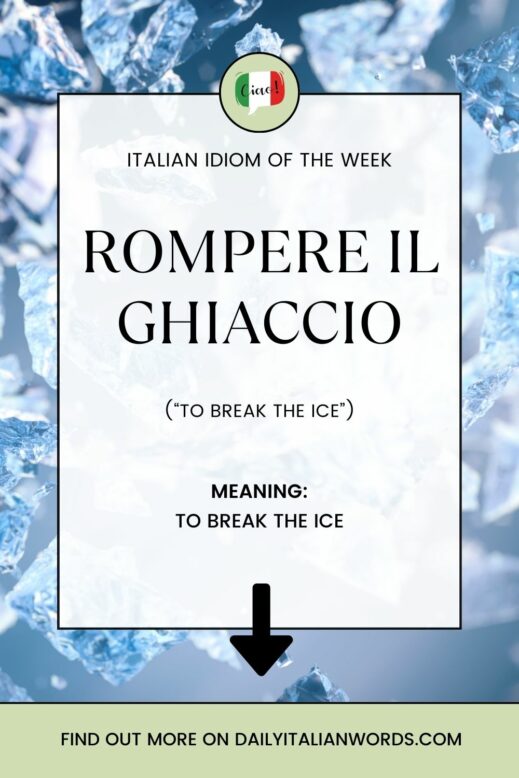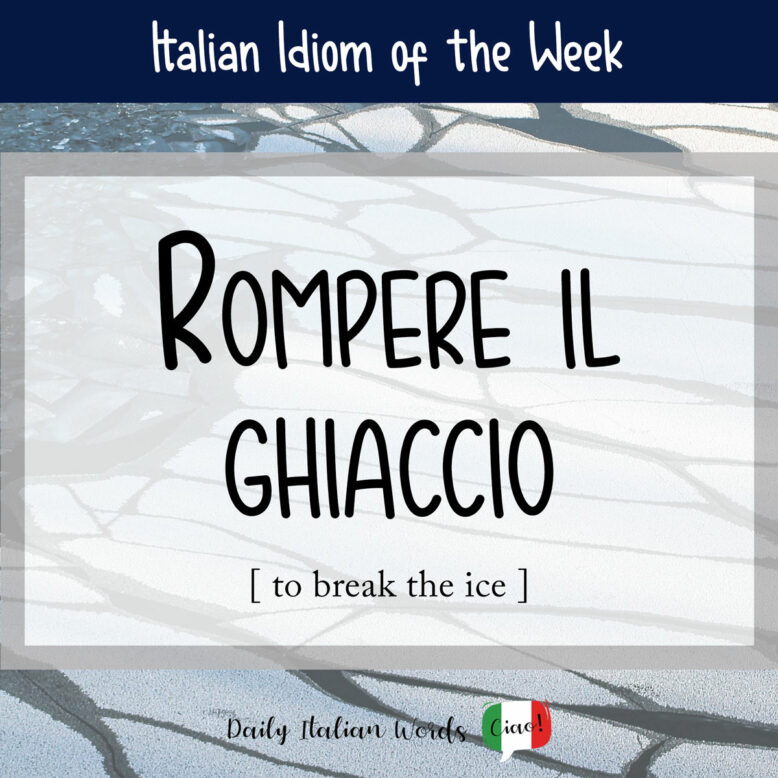Today, let’s explore an Italian idiom that conveniently has a direct counterpart in English, making it quite straightforward to remember if you can recall the words constituting the idiom!
Rompere il ghiaccio
To break the ice

Breaking the ice, or rompere il ghiaccio in Italian, refers to the action of doing or saying something to ease tension and kickstart a conversation, particularly in situations where there is initial awkwardness (due to a previous argument, for example) or when strangers come together.
Un buon modo per rompere il ghiaccio è fare domande aperte.
A good way to break the ice is to ask open-ended questions.
The origin of this expression can be traced back to the practice of boatmen breaking the ice on frozen waterways to initiate navigation. One sailor would lead the way to break the ice on the frozen river, allowing others to follow, underscoring the metaphorical meaning of overcoming initial obstacles. This explanation, also provided Erasmus of Rotterdam’s collection of Latin expressions Adagiorum chiliades, has gained wide acceptance among dictionaries of idioms. (Source: Treccani)

The idiom made its debut in Italy during the late 14th century, as seen in the verses of Francesco di Vannozzo, initially signifying “to start a piece.” Later, in 1471, the Florentine Alessandra Macinghi Strozzi employed the modern meaning in a letter. Interestingly, this expression only found its way to England in the mid-1500s and reached France in the early 1600s. (Source: Treccani)

Heather Broster is a graduate with honours in linguistics from the University of Western Ontario. She is an aspiring polyglot, proficient in English and Italian, as well as Japanese, Welsh, and French to varying degrees of fluency. Originally from Toronto, Heather has resided in various countries, notably Italy for a period of six years. Her primary focus lies in the fields of language acquisition, education, and bilingual instruction.


